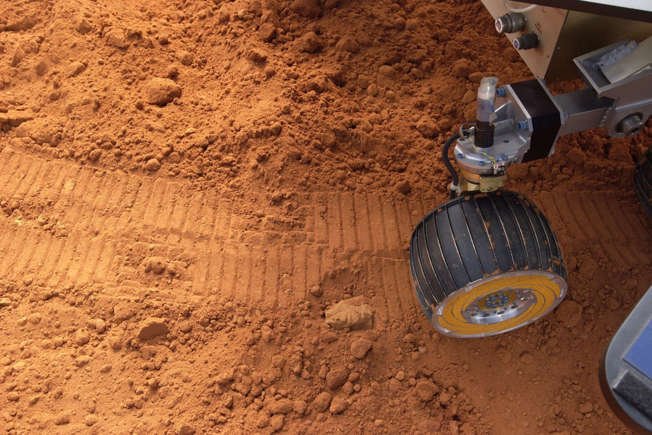The quest to uncover the mysteries of Mars has taken a significant stride forward with recent findings suggesting that ancient mud on the Red Planet could hold the key to proving that it was once teeming with life. This tantalizing discovery has reignited excitement among scientists and space enthusiasts alike, offering new insights into Mars’ geological history and its potential to have harbored life billions of years ago.
The revelation stems from data collected by NASA’s Mars rover missions, particularly the Curiosity rover, which has been exploring the Martian surface since 2012. Analyzing samples of sedimentary rock, Curiosity has uncovered compelling evidence of ancient mudstone formations dating back billions of years. These mudstones, believed to have formed in the presence of water, offer vital clues about Mars’ past climate and environmental conditions.
Mudstones are sedimentary rocks composed of fine-grained clay and silt particles, typically formed in aqueous environments such as lakes, rivers, or deltas. On Earth, mudstones often preserve traces of organic matter and microbial life, making them valuable repositories of ancient biological activity. Similarly, the discovery of mudstone deposits on Mars raises the intriguing possibility that they may contain evidence of past life on the Red Planet.
One of the most promising indicators of ancient life preserved in Martian mudstones is the presence of organic molecules. Organic molecules, which are compounds containing carbon, are the building blocks of life as we know it. While the detection of organic molecules alone does not confirm the existence of past life, it provides a compelling starting point for further investigation.
In 2018, the Curiosity rover made a groundbreaking discovery when it detected complex organic molecules in ancient mudstone samples collected from Gale Crater, a region believed to have once contained a lake. These molecules, which include aromatic hydrocarbons and thiophenes, are among the most diverse and complex organic compounds found on Mars to date. While their origin remains uncertain, their presence suggests the possibility of ancient organic material preserved within Martian rocks.
Moreover, the identification of specific minerals within Martian mudstones further bolsters the case for past habitability. Minerals such as clay and sulfate salts, which require the presence of water to form, provide compelling evidence of a wetter, more hospitable environment in Mars’ distant past. The discovery of these minerals in association with organic molecules strengthens the hypothesis that Mars may have once supported microbial life.
One of the most intriguing aspects of Martian mudstones is their potential for preserving microbial fossils or biosignatures. On Earth, microbial life has left behind a rich fossil record in sedimentary rocks, offering valuable insights into the evolution of early life forms. Similarly, the finely layered structure of mudstones on Mars could serve as a repository for microbial fossils, if they ever existed.
While the search for definitive evidence of past life on Mars remains ongoing, the discovery of ancient mudstones has opened new avenues of exploration and inquiry. Future Mars missions, including NASA’s Perseverance rover and the European Space Agency’s Rosalind Franklin rover, are poised to further investigate the Red Planet’s geological and astrobiological history.
The Perseverance rover, which landed on Mars in February 2021, is equipped with advanced instruments designed to search for signs of ancient life and collect samples for future return to Earth. By analyzing pristine samples of Martian rock and soil, scientists hope to unlock the secrets of Mars’ past and shed light on its potential for hosting life.
In addition, the discovery of ancient mud on Mars represents a significant milestone in humanity’s quest to unravel the mysteries of the Red Planet. These mudstone deposits, formed billions of years ago in the presence of water, offer tantalizing clues about Mars’ past climate and environmental conditions. As scientists continue to explore Mars’ ancient geology and search for signs of past life, the humble mudstone may emerge as a key piece of evidence in the ongoing quest to understand our planetary neighbor.

